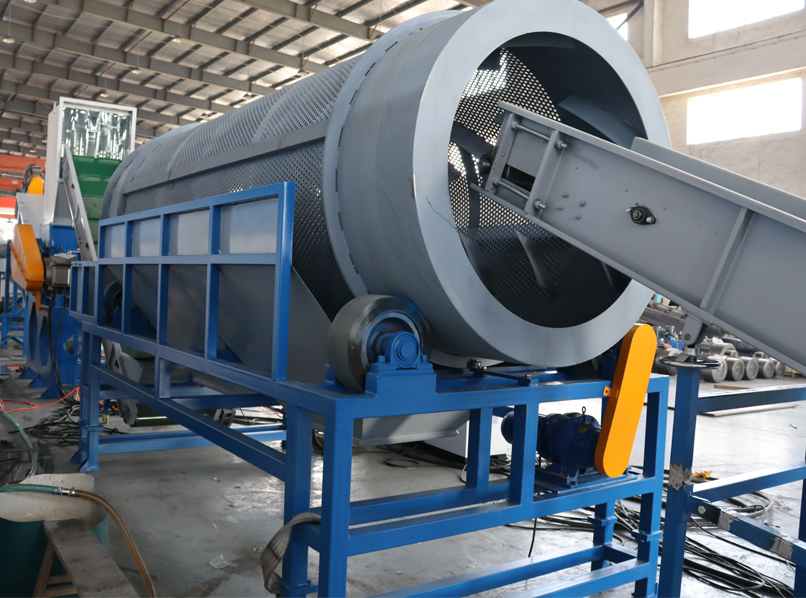Polypropylene (PP) is one of the most widely used plastics in the world, prized for its durability, versatility, and resistance to heat and chemicals. Found in everything from food containers and bottle caps to automotive components and medical devices, PP is an essential material in modern manufacturing. However, as with other plastics, its extensive use brings environmental challenges.
Recycling polypropylene offers a pathway to reduce its environmental footprint, conserve resources, and promote a more sustainable economy. This article explores the environmental impact of PP plastic recycling, from benefits and challenges to its role in the circular economy.
Polypropylene is a thermoplastic polymer with a melting point of around 160–170°C. Its properties—lightweight, high chemical resistance, and ease of molding—make it suitable for a wide range of applications, including:
Packaging: Food containers, yogurt cups, caps, and labels.
Textiles: Woven bags, carpets, and non-woven fabrics.
Automotive: Battery cases, bumpers, and dashboards.
Medical: Syringes, pill bottles, and laboratory equipment.
The global production of PP has grown steadily over the past decades, which has inevitably increased the volume of PP waste entering the environment.

Unlike biodegradable materials, polypropylene can take hundreds of years to decompose in natural environments. Improper disposal leads to several issues:
Landfill overload: PP waste occupies valuable landfill space for decades.
Marine pollution: When PP enters waterways, it can break down into microplastics, posing a threat to aquatic life.
Resource depletion: Virgin PP is derived from fossil fuels, and producing new material consumes non-renewable resources.
Greenhouse gas emissions: The production and disposal of PP contribute to CO₂ emissions and other pollutants.
These environmental concerns underline the importance of improving PP recycling rates.
Recycling PP involves several stages to transform post-consumer or post-industrial waste into reusable material:
Collection: Gathering PP waste from households, businesses, and industrial sources.
Sorting: Separating PP from other plastics using manual or automated methods such as near-infrared (NIR) technology.
Cleaning: Removing labels, food residue, and contaminants.
Shredding: Breaking down the plastic into flakes or chips for easier processing.
Melting and pelletizing: Extruding the material into pellets that can be used for manufacturing new products.
Because PP is a thermoplastic, it can be reheated and reshaped without losing its basic properties, making it highly recyclable under the right conditions.
1. Reduction in Landfill Waste
Recycling PP diverts significant amounts of plastic from landfills. This helps extend the lifespan of landfill sites and reduces the risk of environmental contamination.
2. Conservation of Natural Resources
Virgin PP production relies on crude oil and natural gas. By recycling, manufacturers reduce the demand for these non-renewable resources, preserving them for future generations.
3. Lower Energy Consumption
Producing recycled PP requires less energy compared to manufacturing virgin material. According to industry estimates, recycling PP can save up to 88% of the energy needed for virgin production.
4. Decrease in Greenhouse Gas Emissions
Lower energy use directly translates to reduced CO₂ emissions. Recycling one ton of PP can prevent the emission of hundreds of kilograms of greenhouse gases.
5. Support for the Circular Economy
Recycled PP can be used in various applications such as automotive parts, containers, and construction materials, promoting a closed-loop production system where waste becomes a valuable resource.
While PP recycling offers clear benefits, it also faces challenges that can reduce its environmental effectiveness.
Contamination Issues
Food residues, mixed plastics, and other impurities can compromise recycled PP quality, making it less suitable for high-performance applications.
Limited Recycling Infrastructure
In many regions, facilities capable of handling PP waste efficiently are limited, reducing the overall recycling rate.
Degradation of Material Properties
Each recycling cycle can slightly weaken the polymer chains of PP, limiting the number of times it can be recycled without blending with virgin material.
Market Demand Fluctuations
The value of recycled PP depends on market conditions. When virgin PP prices drop, recycled material may become less competitive, reducing incentives for large-scale recycling.
Recent technological advancements are addressing some of the limitations of PP recycling:
Advanced sorting systems using AI and hyperspectral imaging improve material purity.
Chemical recycling techniques break PP down to its monomers, allowing for higher-quality recycled material comparable to virgin PP.
Compatibilizers are added during processing to improve the quality of recycled PP and allow blending with other plastics.
Closed-loop recycling programs in industries such as automotive and packaging ensure consistent high-quality PP recovery.

Environmental gains from PP recycling depend not only on technology but also on active participation from consumers and industries.
For consumers: Properly separating PP waste, cleaning containers, and supporting products made from recycled PP.
For businesses: Designing products with recycling in mind (Design for Recycling), reducing mixed materials, and investing in take-back programs.
By working together, both parties can significantly increase the PP recycling rate and its environmental benefits.
The environmental impact of PP plastic recycling is overwhelmingly positive when implemented efficiently. It conserves natural resources, reduces energy use, cuts greenhouse gas emissions, and supports a sustainable circular economy. However, challenges such as contamination, infrastructure limitations, and market fluctuations need to be addressed to fully realize these benefits.
With advancements in recycling technology, increased consumer awareness, and stronger industry commitment, polypropylene recycling can become a cornerstone of global environmental protection efforts—transforming what was once waste into a valuable and sustainable resource.